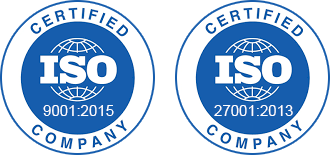
Jet Fuel Procurement Intelligence Report, 2023 - 2030 (Revenue Forecast, Supplier Ranking & Matrix, Emerging Technologies, Pricing Models, Cost Structure, Engagement & Operating Model, Competitive Landscape)
- Published Date: ---
- Base Year for Estimate: 2022
- Report ID: GVR-P-UC-151
- Format: Electronic (PDF)
- Historical Data: 2020 - 2021
- Number of Pages: 0
Research Scope & Content Outline
Chapter 1. Methodology and Scope
1.1. Market Segmentation & Scope
1.2. Research Methodology
1.3. Research Scope & Assumption
1.4. Information Procurement
1.4.1. Purchased Database
1.4.2. GVR’s Internal Database
1.4.3. Secondary Sources & Third-Party Perspectives
1.4.4. Primary Research
1.5. Information Analysis
1.5.1. Data Analysis Models
1.6. Market Formulation & Data Visualization
1.7. Data Validation & Publishing
Chapter 2. Jet Fuel Market Intelligence
2.1. Category Definition
2.2. Category Intelligence
2.2.1. Market Size
2.2.2. Trends
2.2.3. Drivers
2.2.4. Challenges
2.2.5. Segmental Outlook
2.2.6. Regional Outlook
2.3. Technology
2.3.1. Emerging Technology
2.3.2. Best Practices in the Industry
2.4. Regulatory Landscape
2.5. Porter’s Five Forces Analysis
2.5.1. Bargaining power of suppliers
2.5.2. Bargaining power of buyers
2.5.3. Threat of substitutes
2.5.4. Threat of new entrants
2.5.5. Competitive rivalry
Chapter 3. Jet Fuel Market Supplier Intelligence
3.1. Identification of top 10 suppliers
3.1.1. Allied Aviation Services, Inc.
3.1.2. Bharat Petroleum Corporation Limited
3.1.3. BP p.l.c.
3.1.4. Chevron Corporation
3.1.5. ExxonMobil Corporation
3.1.6. Honeywell International Inc.
3.1.7. Neste Oyj
3.1.8. Shell plc
3.1.9. TotalEnergies SE
3.1.10. Valero Energy Corporation
3.2. Jet Fuel Supply Chain Analysis
3.3. Jet Fuel Supplier Landscape
3.4. Jet Fuel Supplier Ranking Methodology
3.4.1. Supplier Operational Capabilities
3.4.1.1. Industry Served
3.4.1.2. Revenue Generated
3.4.1.3. Employee Strength
3.4.1.4. Geographical Service Provisions
3.4.1.5. Years in Service
3.4.1.6. Key Clients
3.4.1.7. Certifications
3.4.2. Supplier Functional Capabilities
3.4.2.1. Type of Fuel (Aviation Fuel/Jet Fuel/Others)
3.4.2.2. Fueling Capacity
3.4.2.3. Shipping Capacity
3.4.2.4. Energy Content
3.4.2.5. Density
3.4.2.6. Others
3.5. Jet Fuel Supplier Scoring Criteria
3.6. Jet Fuel Supplier Positional Matrix (SPM)
3.6.1. Rulers
3.6.2. Challengers
3.6.3. Loungers
3.6.4. Niches
3.7. Jet Fuel Supplier Market Concentration
3.7.1. Industry structure
3.8. Recommended Jet Fuel Suppliers
3.8.1. Supplier 1 with detailed profile
3.8.2. Supplier 2 with detailed profile
3.8.3. Supplier 3 with detailed profile
Chapter 4. Competitive Landscape
4.1. Recent Supplier Developments with Measured Impact
4.1.1. Joint Ventures
4.1.2. Mergers & Acquisitions
4.1.3. Collaborations or Partnerships
4.1.4. Other major developments
4.2. Supply-Demand Analysis
4.2.1. Supply Analysis
4.2.2. Demand Analysis
Chapter 5. Jet Fuel Pricing and Cost Intelligence
5.1. Cost Structure Overview
5.1.1. Raw Materials
5.1.2. Labor
5.1.3. Machinery
5.1.4. Transportation
5.1.5. Marketing Costs
5.1.6. Taxes
5.1.7. Others
5.2. Pricing Intelligence
5.2.1. Factors Influencing the Prices for Jet Fuel
5.2.2. Pricing Model Analysis
5.2.2.1. Volume-based pricing or,
5.2.2.2. Competition based pricing or,
5.2.2.3. Cost-plus pricing or,
5.2.2.4. Demand-based pricing or,
5.2.2.5. Others
5.2.3. Jet Fuel Prices - Supplier’s Quotation
Chapter 6. Sourcing Intelligence
6.1. Engagement Model
6.1.1. Fully Outsourcing Model or,
6.1.2. Partial/Hybrid Outsourcing Model or,
6.1.3. In-house Product Development Model or,
6.1.4. Shared Service Model
6.2. Operating Model
6.2.1. Basic Provider or,
6.2.2. Approved Provider or,
6.2.3. Performance-based Model or,
6.2.4. Others
6.3. KPI/SLA Elements
6.4. Negotiation Strategies
6.5. LCC/BCC Sourcing Analysis
6.5.1. China
6.5.2. India
6.5.3. Russia
6.5.4. U.S.
6.5.5. Saudi Arabia
6.5.6. Insights on top 2 LCC/BCC Countries
Add-on Services
Should Cost Analysis
Component wise cost break down for better negotiation for the client, highlights the key cost drivers in the market with future price fluctuation for different materials (e.g.: steel, aluminum, etc.) used in the production process
Rate Benchmarking
Offering cost transparency for different products / services procured by the client. A typical report involves 2-3 case scenarios helping clients to select the best suited engagement with the supplier
Salary Benchmarking
Determining and forecasting salaries for specific skill set labor to make decision on outsourcing vs in-house.
Supplier Newsletter
A typical newsletter study by capturing latest information for specific suppliers related to: M&As, technological innovations, expansion, litigations, bankruptcy etc.


